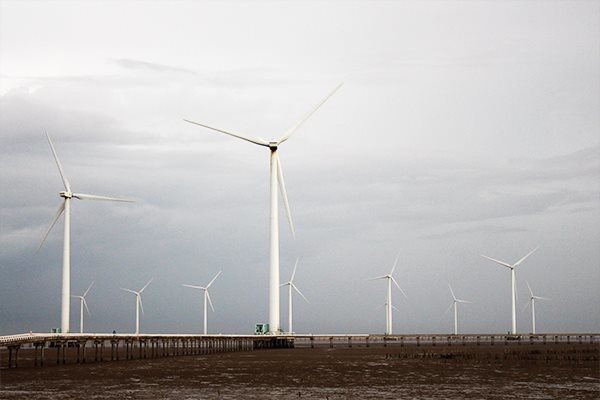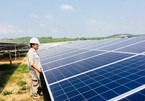The countries that develop renewable energy now rather than later will have certain advantages, according to the Green Innovation and Development Centre (GreenID).

GreenID’s director Nguy Thi Khanh cited a 2019 report on the status of renewable energy, saying that total renewable energy capacity worldwide by 2018 had reached 2,378 GW, accounting for 33 percent of total power capacity.
According to GreenID, in 2018 the world witnessed a boom in investment in renewable power with total investment capital of $288.9 billion, which accounted for 65 percent of total investment in electricity production last year. The capital poured into renewable power was twice as much as total investment in nuclear, coal-fired and gas-fired thermopower.
| In Vietnam, in 2016 the government released Decision No 428 on adjusting the 2011-2020 national power development plan (the seventh plan), deciding to increase the proportion of renewable energy. |
In Vietnam, in 2016 the government released Decision No 428 on adjusting the 2011-2020 national power development plan (the seventh plan), deciding to increase the proportion of renewable energy.
Under the seventh plan, Vietnam would have 800 MW of wind power by 2020, 2,000 MW by 2025, and 6,000 MW by 2030, which would account for 0.8 percent, 1 percent and 2.1 percent of total power capacity, respectively.
As for solar power, the capacity would be 850 MW by 2020, 4,000 MW by 2025 and 12,000 MW by 2030, accounting for 0.5 percent, 1.6 percent and 3.3 percent, respectively.
Regarding coal-fired thermopower, under the seventh plan, the total capacity would be 26,000 MW by 2020, 47,600 MW by 2025 and 55,300 MW by 2030, accounting for 49.3 percent, 55 percent and 53.2 percent, respectively.
Khanh of GreenID stressed that the potential for renewable energy development in Vietnam is very high.
As of June 30, 82 solar power projects with total capacity of 4,464 MW were in commercial operation, which is five times higher than the solar power development target set in the seventh plan for 2020. Many other projects have been registered.
According to Tran Huu Hiep, a respected economist, though Vietnam set the target of having renewable energy account for 9 percent by 2020, the real figure has actually reached 8 percent.
Hiep believes that it is necessary to reconsider the seventh plan because it focuses on coal-fired thermopower (52 percent of total electricity output by 2030).
Mai Chi

Solar power not fully exploited because of limited transmission capability
As a country with abundant renewable energy potential, Vietnam will have many benefits when shifting early to develop clean energy.

ADB signs $37 million loan agreement for Southeast Asia's largest floating solar plant in Vietnam
Da Mi has $37 million for a floating solar project it wants to build at its hydropower plant in Binh Thuan province.
 Vietnam has been step by step switching from coal-fire thermopower to renewable power.
Vietnam has been step by step switching from coal-fire thermopower to renewable power.